Soul in the Saddle: Inside Bill Pickett Invitational Rodeo with Color My Outdoors (Career Edition)
August 14, 2025
Story by Cowgirl Candace | Photos by Jakari Bo Ward | Video by Zac Holben
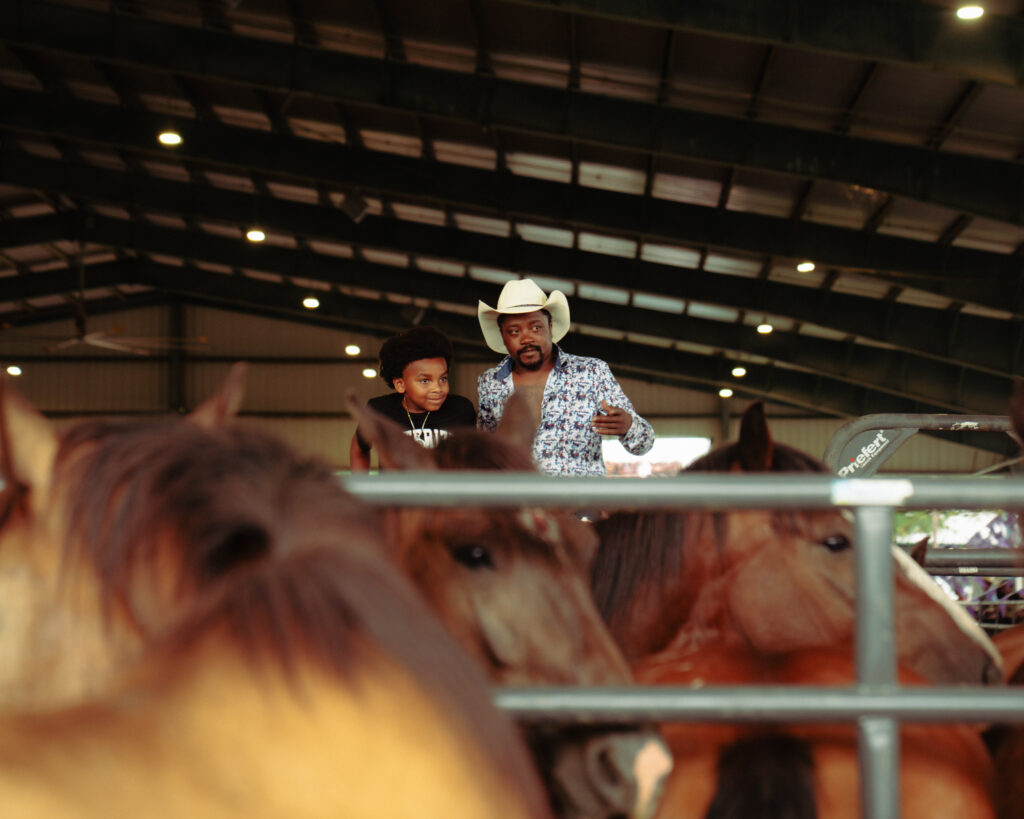
The agrarian air in Conyers, Georgia, crackled with energy the moment our Deep South boots hit that red dirt. Georgia International Horse Park’s 1,400-acre showground became sacred ground Aug. 2. The 41st Annual Bill Pickett Invitational Rodeo (BPIR) returned yet again to the Peach State, and Color My Outdoors’ team, board, and community supporters were there in the stands and on the ground to witness it all. For some, it was a familiar tradition. For others, like our own Board President Leandra Taylor, it was a first-time experience she couldn’t stop smiling about. “BPIR is a great connection to the stories our organization uplifts to recognize the contributions and history of Communities of Color in the outdoors,” said Taylor, her voice bright with the kind of enthusiasm that comes from discovering something new and resonant. “Most of our Color My Outdoors supporters who attended the rodeo with us are experiencing rodeos — and Black rodeos — for the first time together while building community at ‘The Greatest Show on Dirt.’”
This year alone, BPIR will draw more than 100,000 spectators across its national tour. The world’s longest-running Black touring rodeo made Georgia one of its sold-out weekend homes with nearly 2,000 spectators on that particular Saturday. The horse park welcomes more than 500,000 visitors annually, serving as a true hub of Outdoor South recreation. Among the 20 Color My Outdoors VIP guests, 19 were first-time rodeo spectators. For them, it was a revelation. For me (a fourth-generation farmer from Milledgeville, Georgia), consider it a time-honored ritual. A homecoming I’ve attended since my 1980s-baby childhood.
BPIR offers more than entertainment. It’s a multigenerational institution. Founded in 1984 by visionary Lu Vason to honor legendary cowboy Bill Pickett (the father of bulldogging: the gutsy act of wrestling down a steer by lunging for the horns, torquing the head sideways, and clamping down on the upper lip in the quickest time possible), the rodeo has become a cross-country celebration of Black cowhand excellence. Cowboy and cowgirls exercise showmanship in bull riding, steer wrestling, ranch bronc riding, team roping, barrel racing, relay racing, ladies breakaway roping, and ladies steer undecorating. Representing a range of states and ages. The 2025 rodeo reunion opened in Memphis; rolled west to Los Angeles and Oakland; and closed its legacy tour here in Georgia before heading to September’s National Finals in Washington, D.C. From the first arena spotlight to the final kick of dust, this event remains a living, breathing classroom for heritage, hustle, and heart.
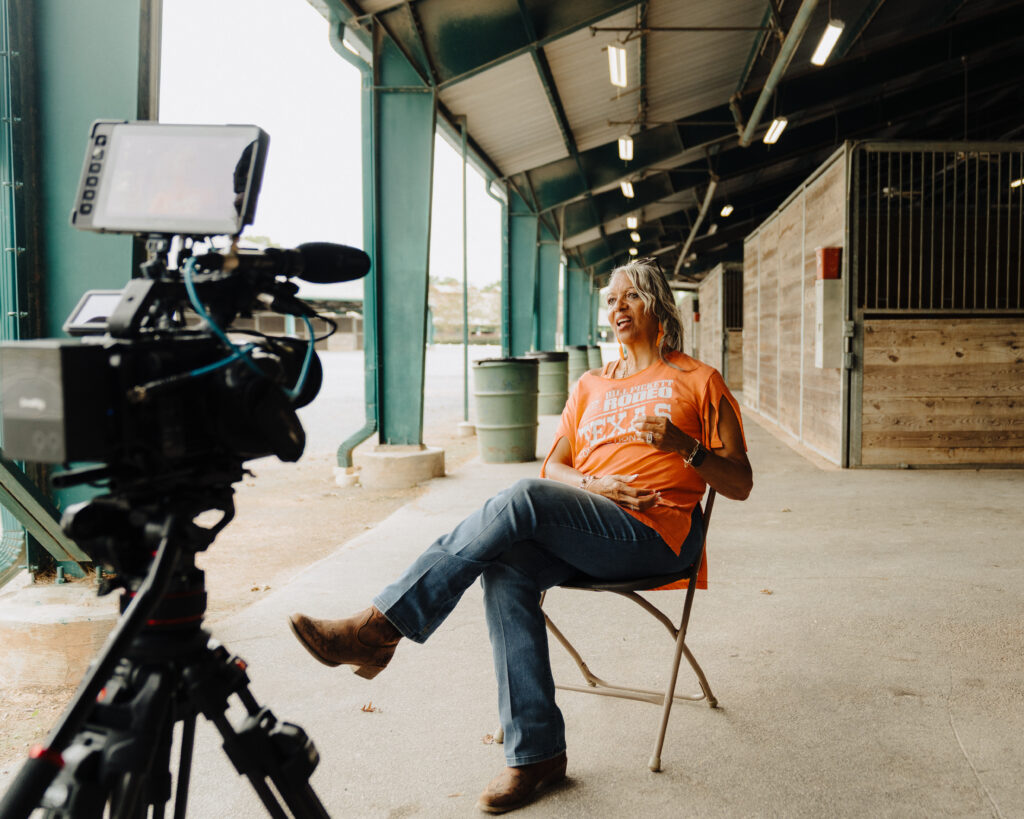
Where Women Lead, Legacies Grow
In the arena’s center stood Valeria Howard-Cunningham, the first woman to lead BPIR after her husband Lu’s passing. She inherited more than a role. She inherited a five-generation legacy. “I was hesitant at first, but so many women in our rodeo family called in support of me taking on this position,” she told me. “Because of them, I said ‘OK. I will keep this rodeo going for us.’” And watching Valeria command this space throughout the years has been aspiring for younger generations of women to take the reins confidently in pursuit of new rodeo careers.
One of those women is Natasha Harrison, a fierce competitor from Port Arthur, Texas, who rode quarter horse, Bernie Mac, in the ladies’ breakaway and steer undecorated events. “These are fast-paced rides,” Natasha said, flashing a wide smile and speaking with unshakable confidence. “You have to keep a fearless mindset in the saddle if you want to win.”
Valeria’s influence has opened professional gates for Black women to participate in the forefront of the arena and behind the scenes — from Acynthia Villery becoming BPIR’s first Black female rodeo announcer to Margo Wade LaDrew as its national development and partnership director. Valeria’s leadership mirrors Color My Outdoors’ commitment to sharing the journeys and impact of Women of Color in outdoor lifestyles and livelihoods. From saddle to soil, her story reflects the career pathways we champion through cultural storytelling and conservation education.
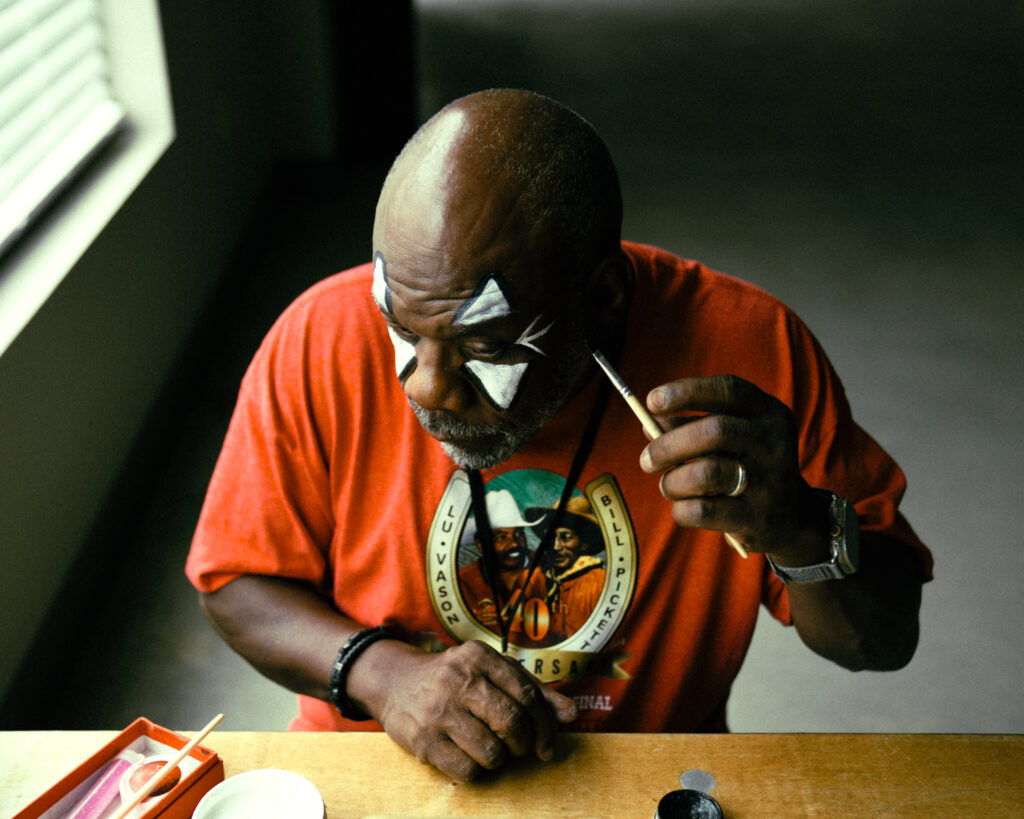
Cultural Comedy as Crowd Control
Not every rodeo legend is measured in hard-won buckles or belt spurs. Some, like Avery “Spanky” Ford, master the art of commanding a crowd by turning quick wit and stage presence into a career that keeps the arena’s heart beating. In a dressing room just beyond the chutes, Spanky painted on his signature appearance. He carefully outlined chalky-white exaggerated triangles above and below his eyes. “Before I enter that arena, I’m Avery,” said the 2025 “Living Legend Award” recipient of the National Black Cowboy Rodeo Awards & Gala in Oklahoma City.
“Once the makeup goes on, I transform into Spanky. It’s all about improvisation and timing. It’s an artform to read the crowd and know exactly when to react.” Spanky isn’t just comic relief. He’s a cultural translator, inviting families into rodeo life through laughter while honoring its weight and worth. His performance is proof that careers in rodeo stretch far beyond riding bulls. There’s space here for artistry, emotional intelligence, stagecraft, and a finesse in crowd participation.
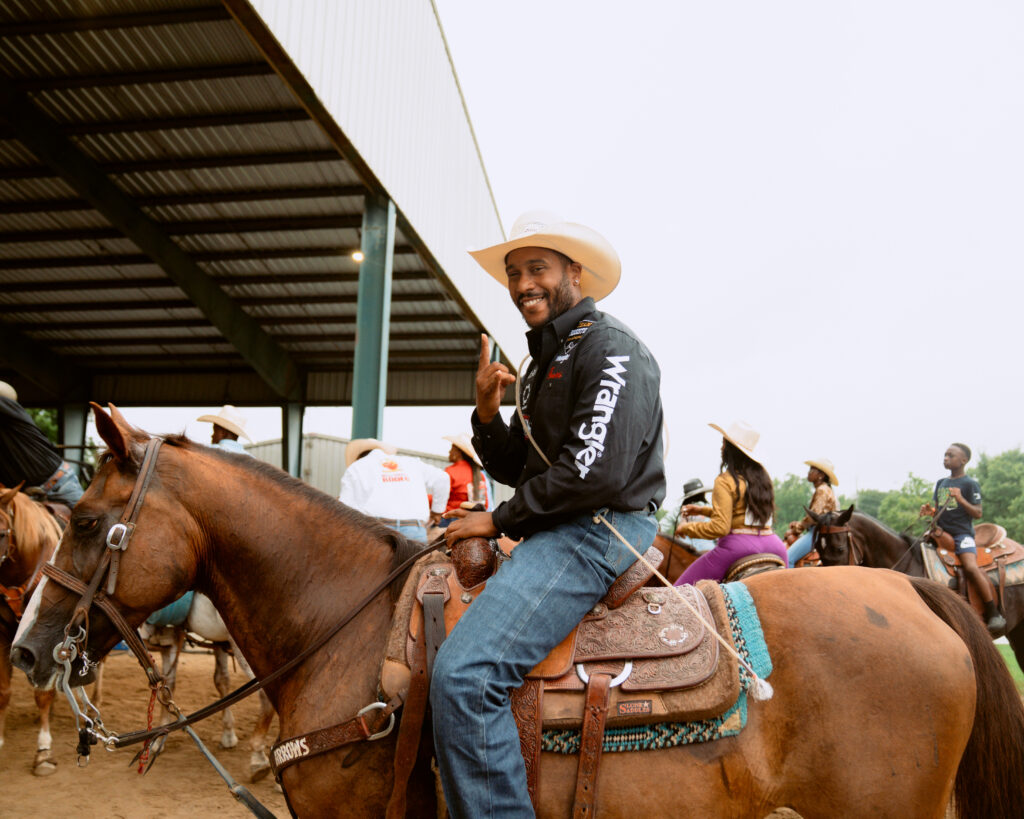
Grit, Grind, and Getting Back Up
I reconnected with long-time rodeo friend and fellow cowhand Dennis Chachere, a calf roper from Houston, before his arena run. He and his chestnut quarter horse, Dot, traveled from Texas for a shot at victory. “I came here to win,” he said. “It’s all about consistency with each leg of the tour.” Dennis didn’t rope the calf clean that night, but what stuck with me was how he carried himself afterward: Calm. Grounded. Proud. His demeanor spoke volumes. It was a lesson in grace under pressure. Rodeo, like agriculture, rewards persistence, not perfection.
Saluting Dennis and other contestants in that particular event was Tony Monts, a BPIR living archive. He paced the backside of the arena. Eager for each rider. The once Compton Cowboy rode bulls professionally for 20 years and now lives just outside Atlanta on 30-plus acres with eight horses. He watched closely as younger bull riders took on the same bucking machines he once wrangled. “It’s not about the money,” he said with honesty in his tone. “BPIR is about family. It’s about bragging rights, swallowing spit, and talking shit with my brothers.”
Black cowboys like Dennis and Tony are part of a history that stretches back to the 1800s when an estimated one in four working cowhands in the American West was African American. Their stories — often left out of mainstream Western lore — continue to shape the community and competition of rodeo today. Tony reminded me that rodeo is more than an event. It’s kinship in motion. A place where generational knowledge is passed down instead of locked away.
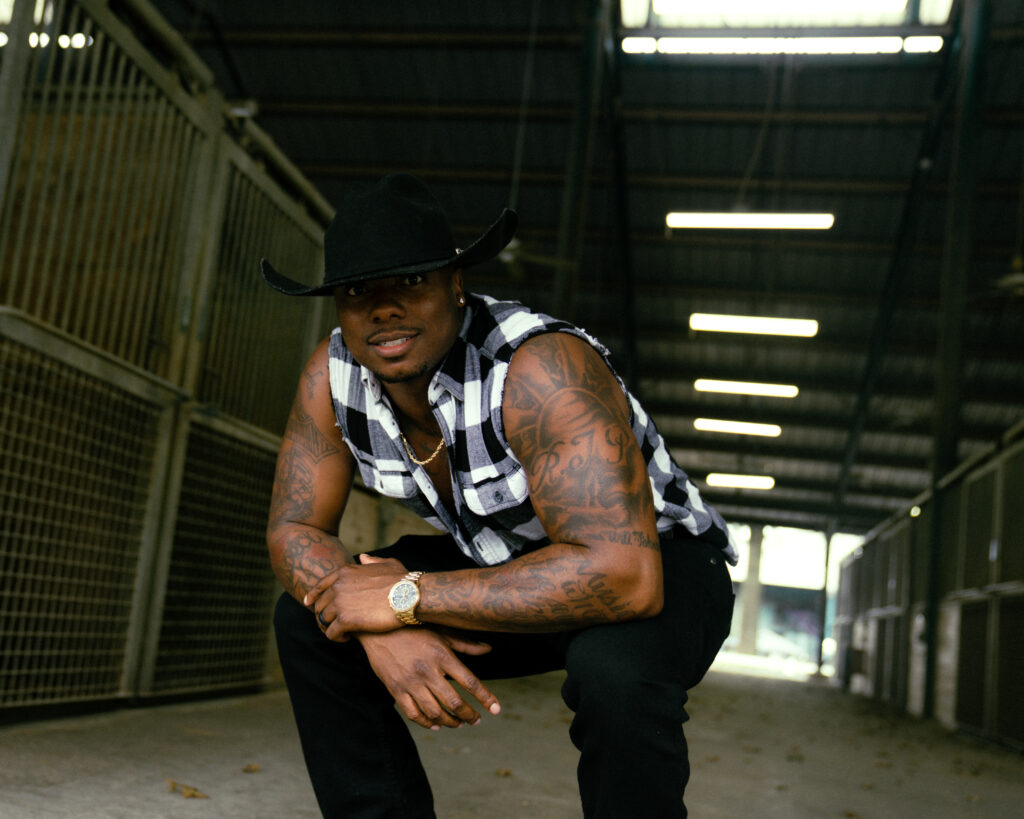
Country Soul, Southern Roads
Right before the rides and races, the crowd swayed to the pre-show sounds of Alabama native Kirk Jay, a “The Voice” finalist and BPIR’s 2024 Soul Country Music Star talent competition winner. In its second year, the contest provides a platform for Black country Western artists to break into this genre of the music industry. “I’m grateful for the opportunity to tour with the Bill Pickett Invitational this year,” said Kirk. “We have a certain sound in the South that comes with those gospel roots that brought us over. It’s what separates us, and it can’t be mimicked. I’m honored to share this sound with so many new people.”
With global artists like Beyoncé making cowboy culture chart-topping history, rodeo is evolving. It’s elevating from America’s premier Western sport to an international stage for multidimensional Black creativity. That night, I stood under the grandstand lights, surrounded by first-time spectators from our Color My Outdoors crew. Most had never seen a live rodeo. A few had never worn boots. But by night’s end, they were hooting, hollering, and waving bandanas with pride.
This agriculture adventure is what the future of the Outdoor South looks like: People of Color reclaiming space and livelihood in landscapes we’ve long belonged to. Through agriculture. Through storytelling. Through rodeo. This wasn’t just a Saturday night show. It was a career revelation, cultural reminder, and call to action to honor the land we ride on, the people who nurtured it, and the paths still waiting to forge. “Loved it,” said Kelia Kirkpatrick, one of Color My Outdoors’ social media VIP winners and first-time BPIR attendee. “From winning my tickets then winning a T-shirt at the rodeo, Aug. 2 was just magical.”
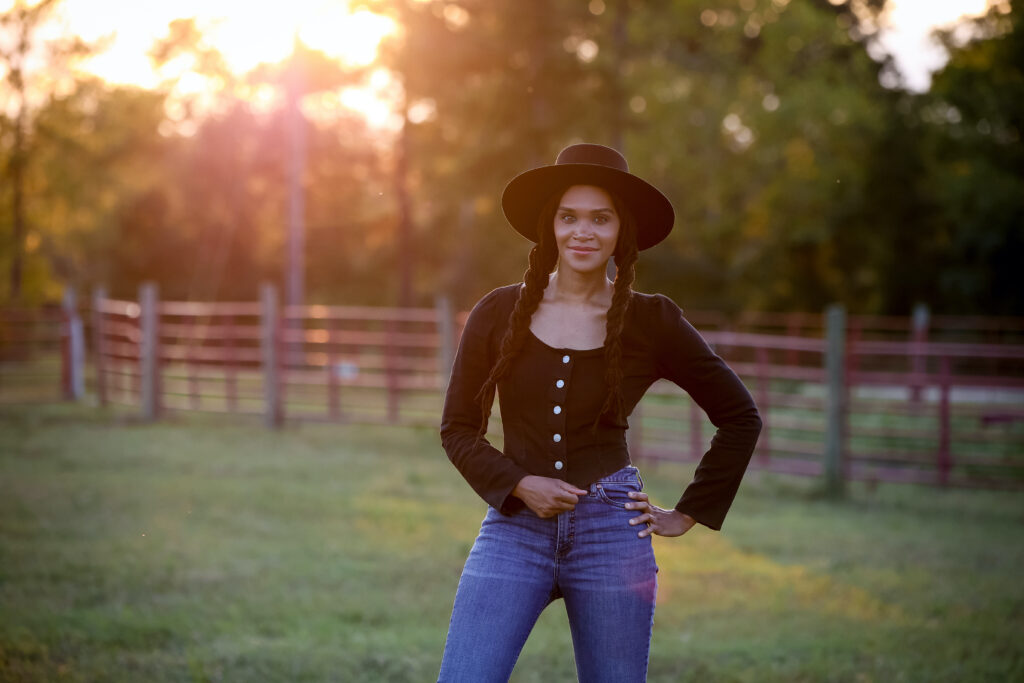
Candace Morrow, aka Cowgirl Candace, is a fourth-generation cowgirl, award-winning storyteller, and cultural strategist rooted in Georgia’s Black Belt Region. A lifelong farmer and advocate for Southern agritourism, she elevates place-based storytelling, capturing authentic voices of the American South. Her partnerships with iconic brands like Wrangler and Justin Boots amplify the often-overlooked narratives of American South heritage. With nearly two decades of experience in digital strategy and journalism, Cowgirl Candace has become a prominent steward of reimagining outdoor adventure and agricultural storytelling. Featured in Beyoncé’s “Cowboy Carter Tour Book” and Cowboys & Indians Magazine’s “21 Western Influencers,” she has demonstrated a profound commitment to documenting the nuanced experiences of rural communities.
Please add my contact for reminder of the next black horse shows and upcoming events